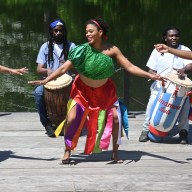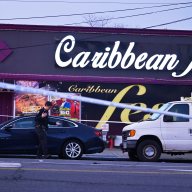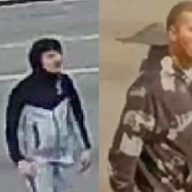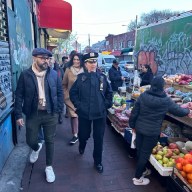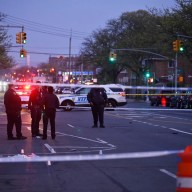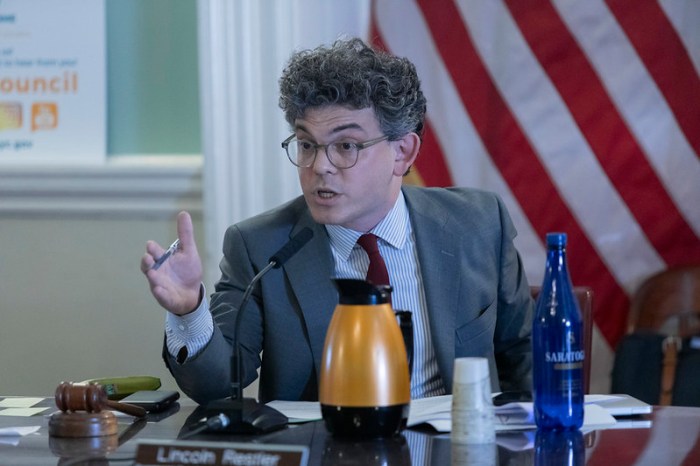By Jennifer Warren
Anyone wandering into the Rego Park Jewish Center's Crystal Ballroom Sunday, may have felt somewhat displaced by the Bukharan dance, music and highly spiced foods. But that was the intent of the cultural program's organizers.
“Most American Jews, especially in this area, are not aware of Jewish customs outside of their own,” said Romiel Daniels, chairman of the cultural series. Daniels, along with Lee Lobel-Zwang, planned a four-part series of Jewish culture from Eastern, Middle Eastern and African lands to bring some flavor to the neighborhood.
Forest Hills, Rego Park and Briarwood are home to nearly 50,000 Bukharan Jews, who began immigrating to the area in the 1970s and '80s, said Professor Aron Aronov of Bukharan Jewish Community Center, who spoke at the festival.
The Jews of the Bukharan Kingdom in what is today Uzbekistan and Tajikistan in Central Asia, midway between India and Russia, were taken as captives to Babylon after the destruction of the First Temple in 586 B.C. Many wandered eastward as merchants following the Silk Route.
When Cyrus the Great conquered the Babylonians in the 6th century B.C., “of course, the overwhelming number of Jews went back to Jerusalem,” Aronov said. “But my family stayed.”
Those like Aronov's family who remained were steeped in the surrounding cultures of Turkey, Iran, Kazakhstan, and Afghanistan. Their language, Tajik, was a dialect of Farsi, their clothes were influenced by the ornate patterns and jewels of India, and their food was laced with the smoky, spiced flavor of cumin and currants. But the community retained its identity through religion.
Early in the 20th century when Lenin ruled Russia, the Bukharan Jews faced some oppression, but the community was acknowledged as a separate culture, Aronov said. With Lenin's death in 1924 and Joseph Stalin's shift to power, that all changed.
“There were no more Bukharan Jews, just Jews.” Aronov said.
During Stalin's reign of political purges, synagogues were closed, rabbis were murdered, and Hebrew, one of the many languages the community spoke, ceased to be heard.
Traditional religious rites were performed clandestinely, Aronov said. “Ninety-nine percent of our [newborn boys] still had circumcisions, but secretly. On Yom Kippur we had to go to work, to school – if you stayed home, they knew. But we still fasted.”
Aronov said it was the mothers who defiantly retained the Jewish tradition in the family. “Fathers were afraid of the government,” he said, “but mothers took desperate attempts to keep us on Jewish tracks.”
During the Holocaust, the Jewish communities of Central Asia sheltered more than 100,000 European Jews seeking refuge from the Nazi regime, Aronov said.
Aronov's grandfather was chairman of the Jewish committee at the time, and after the synagogue was closed by the state, a make-shift shul was established in the patriarch's home. The committee provided homes, food, and cemeteries for the displaced refugees.
“We were helping you 50 years ago,” Aronov told the Rego Park residents, who are predominantly of Eastern European descent. “Today, you are helping us.”
Taking to the Rego Park stage to accompany the fluid movements of Yagudayev was the Shashmaqam Ensemble. The band of nine musicians, including two high-quivering female vocalists, played twin drum heads, an accordion, a miniature guitar called a “tar.” The ensemble took its name from the traditional song “shashmaquam,” an elaborate folk arrangement comprised of six, or “shash,” melodies.
After the group's performance – featuring Yagudayev's exotic movements and Ezra Malakov's crooning of Persian love songs – Lobel-Zwang led the room's applause.
“If we think we know about love in America, we are much mistaken,” Lobel-Zwang said as she gestured to the over-50-year-old Yadudayev, descendant of the Jews of Babylon. “You are the sexiest dancer I have ever seen.”


















